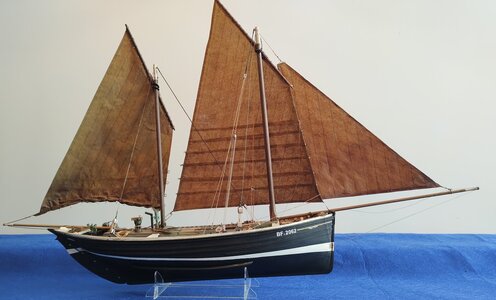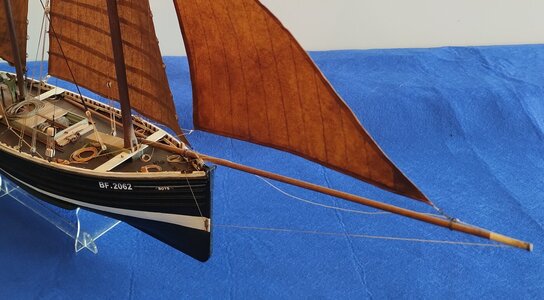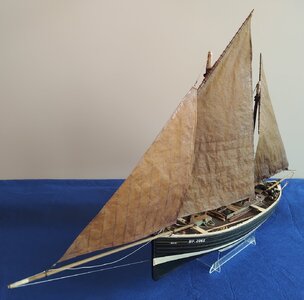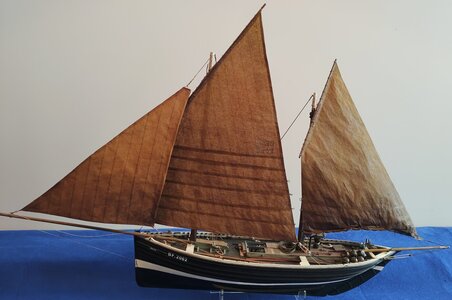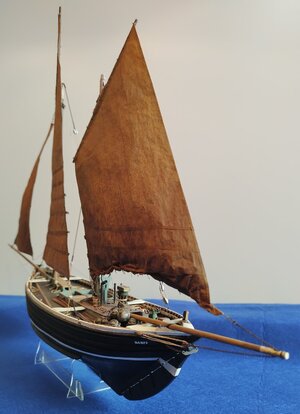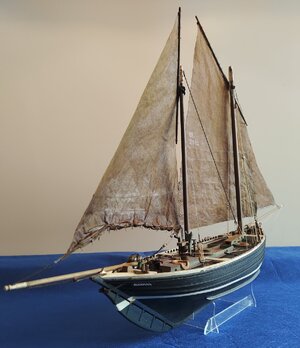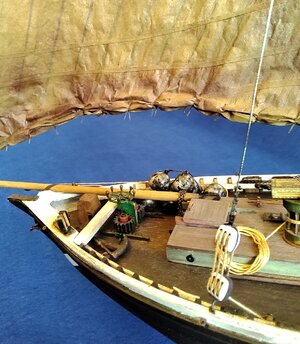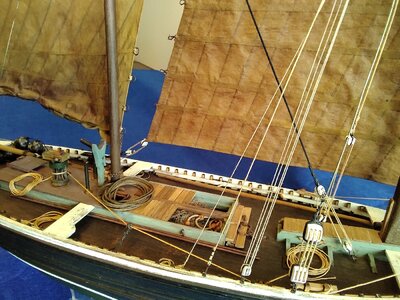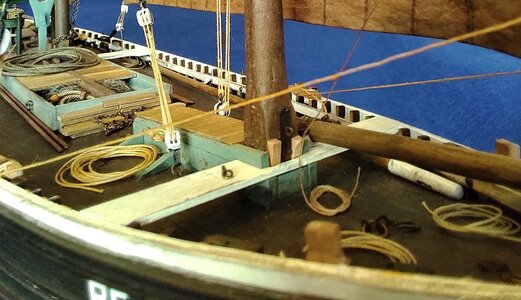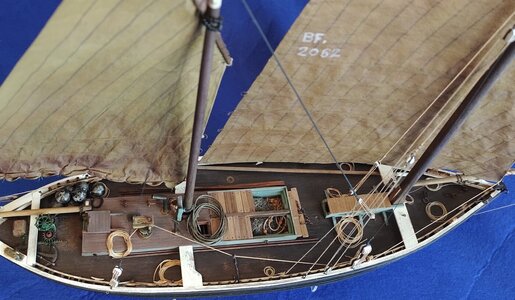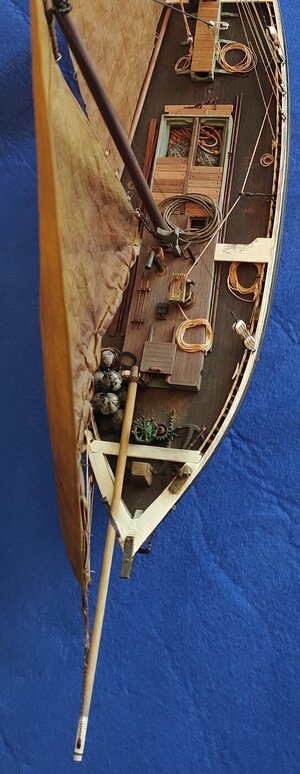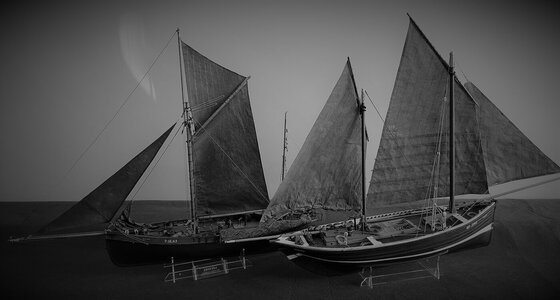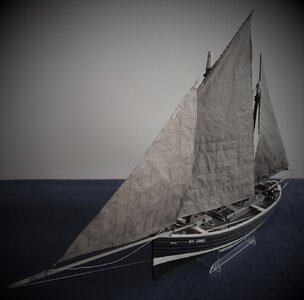- Joined
- Aug 14, 2018
- Messages
- 820
- Points
- 403

With this collar for the heel of the jibboom I have just about completed the fixed deck fittings
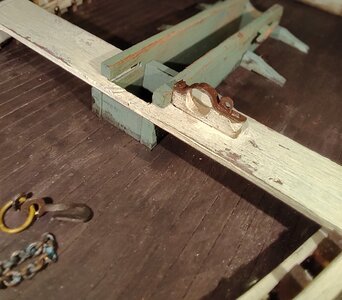
Next I will finish the hardware attached to the masts, yards and booms. I noticed that as well as normal sheaves the boom and main mast have half sheaves, those canny Scotsmen not wanting to pay for the second hole! Then it is on to the sails and rigging, there's not much rigging but it looks interesting. Here are some pics. with the masts and booms sitting in place. That fore mast has some girth to it, March's book claims the big Zulus main masts had a diameter of over twenty-eight inches at deck level, around seven foot circumference.
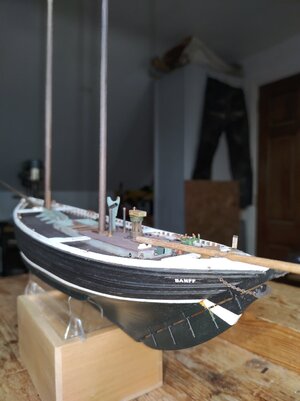
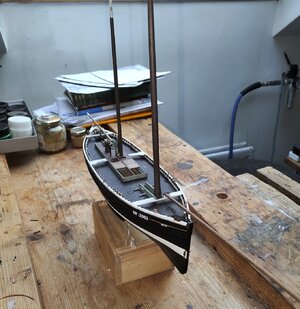
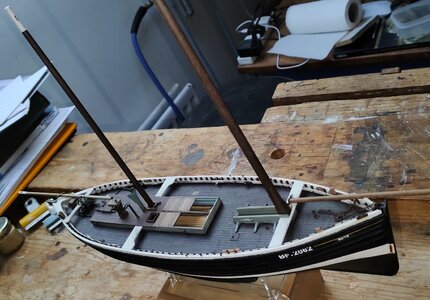
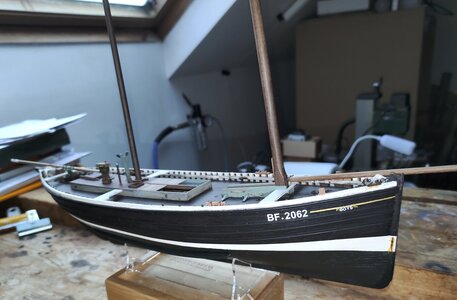
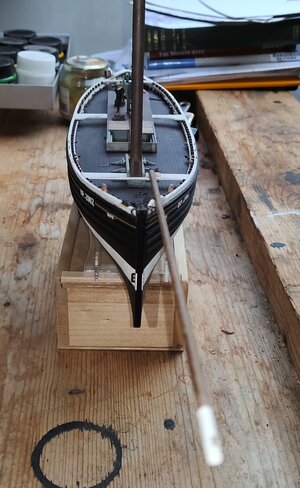 Cheers JJ..
Cheers JJ..

Next I will finish the hardware attached to the masts, yards and booms. I noticed that as well as normal sheaves the boom and main mast have half sheaves, those canny Scotsmen not wanting to pay for the second hole! Then it is on to the sails and rigging, there's not much rigging but it looks interesting. Here are some pics. with the masts and booms sitting in place. That fore mast has some girth to it, March's book claims the big Zulus main masts had a diameter of over twenty-eight inches at deck level, around seven foot circumference.




 Cheers JJ..
Cheers JJ..




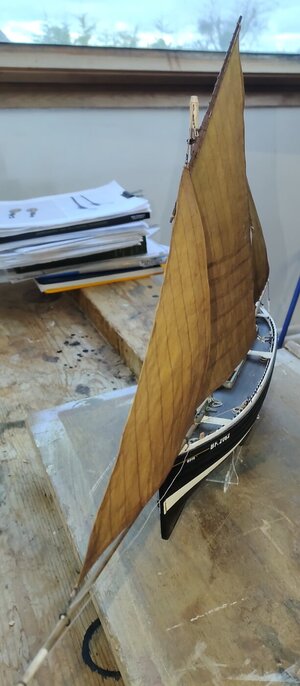
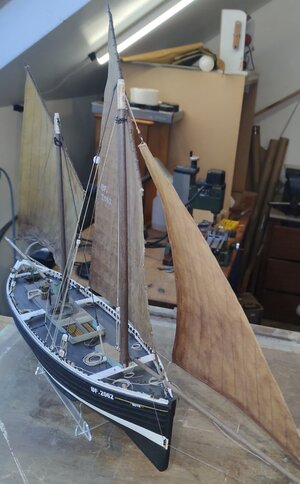
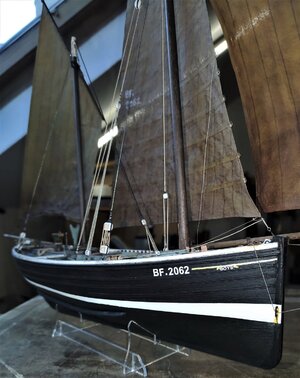
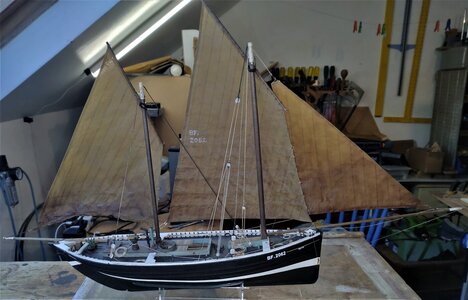
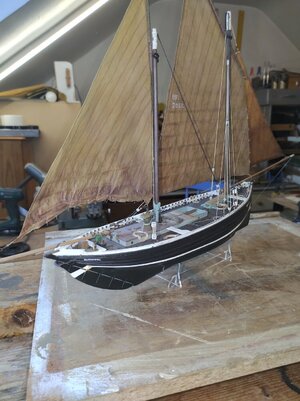
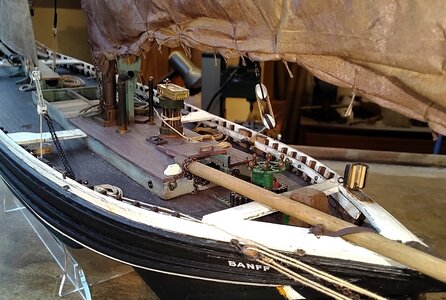
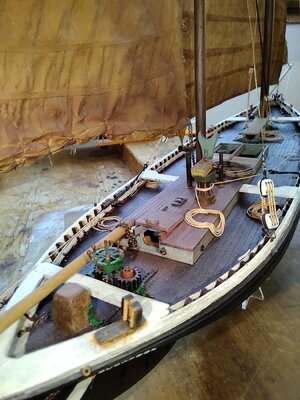
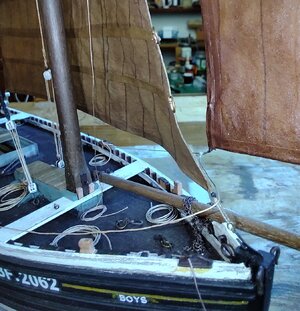
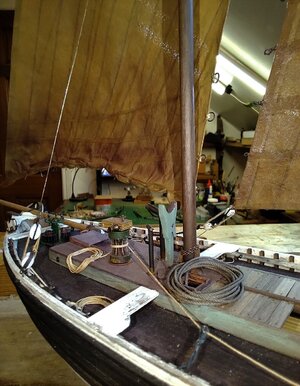
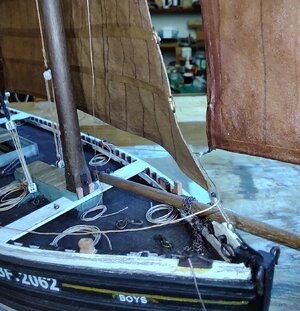
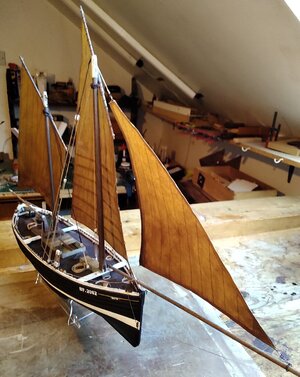

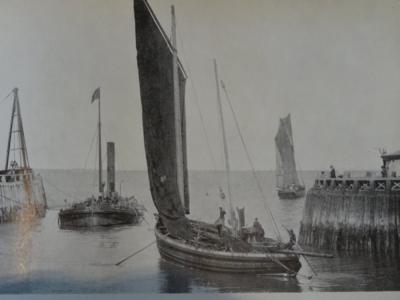
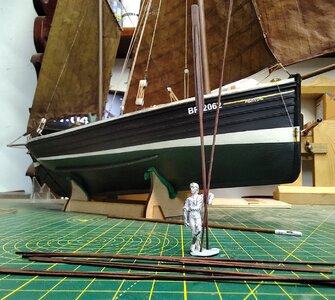
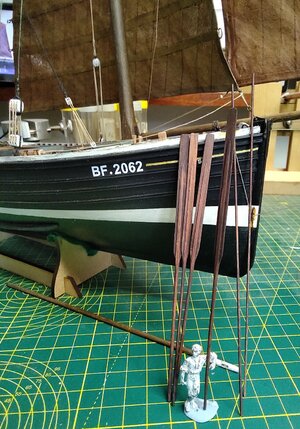
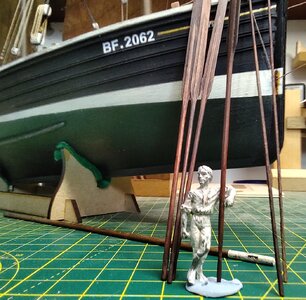
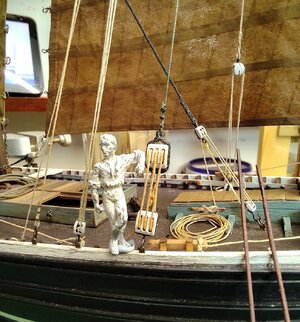
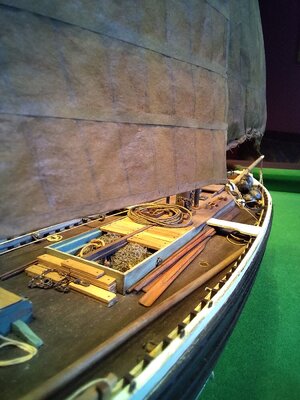
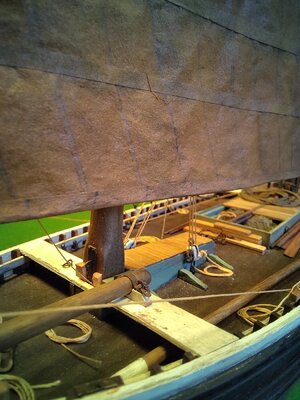
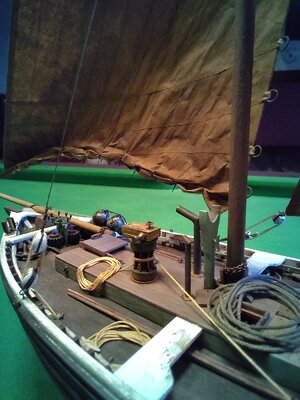
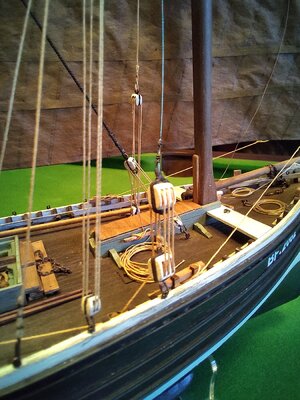
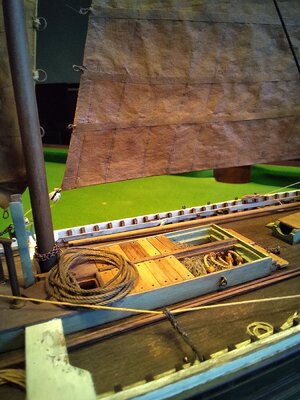
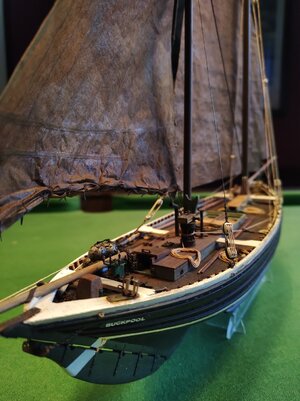
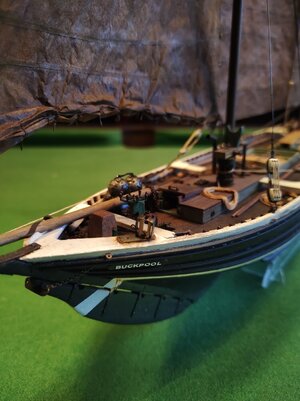
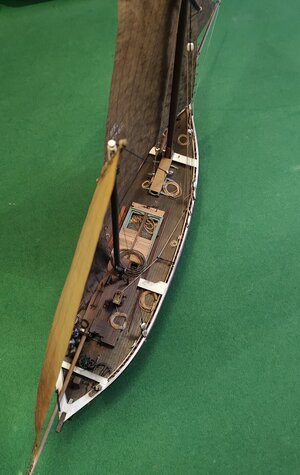
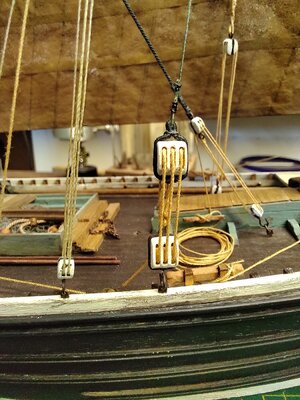
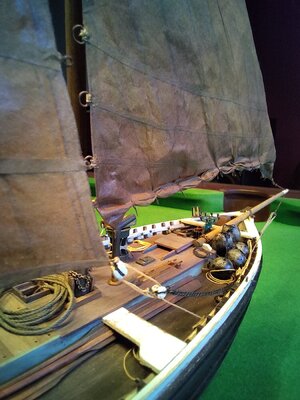

 Great, with so many tiny realistic details.
Great, with so many tiny realistic details.